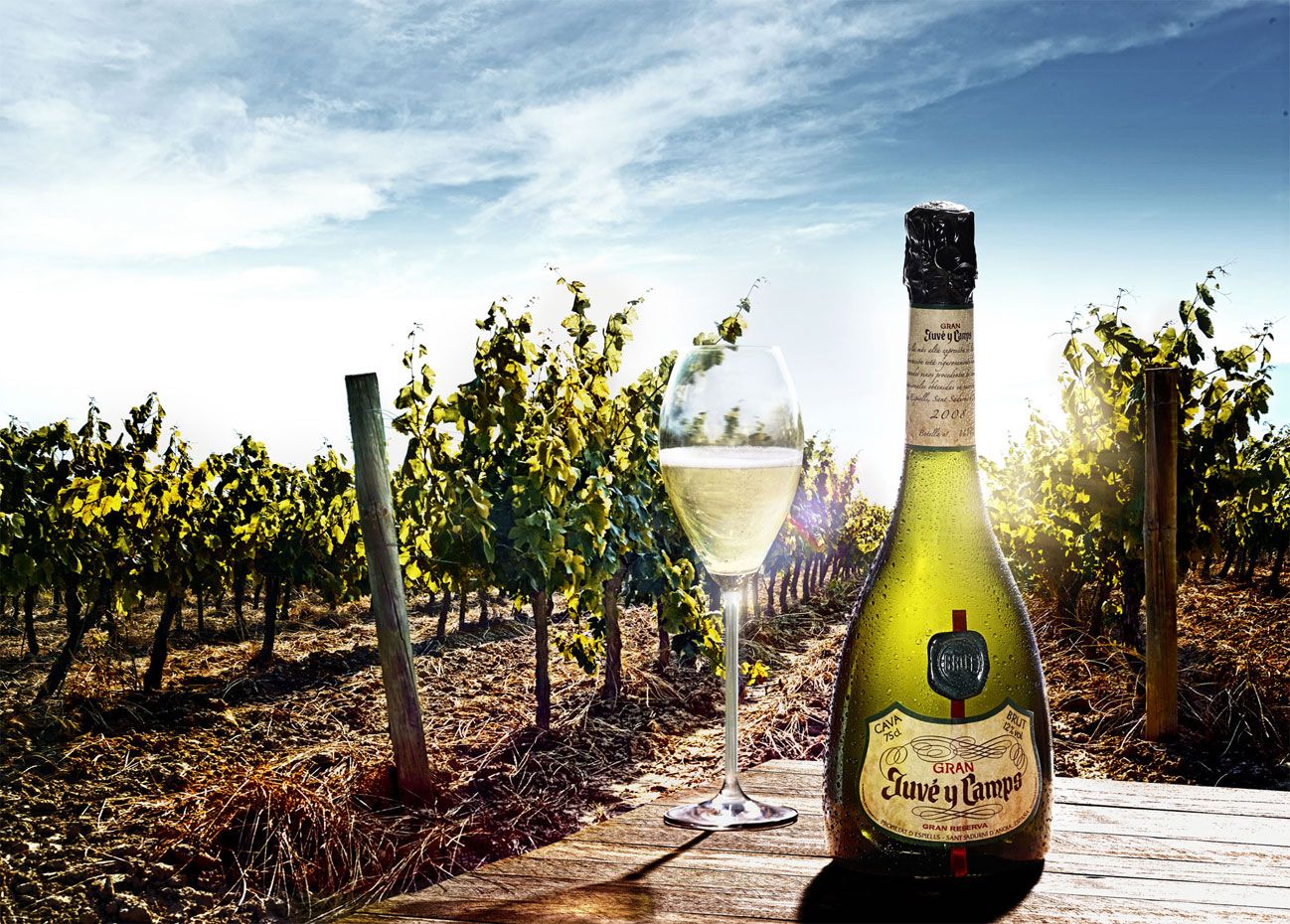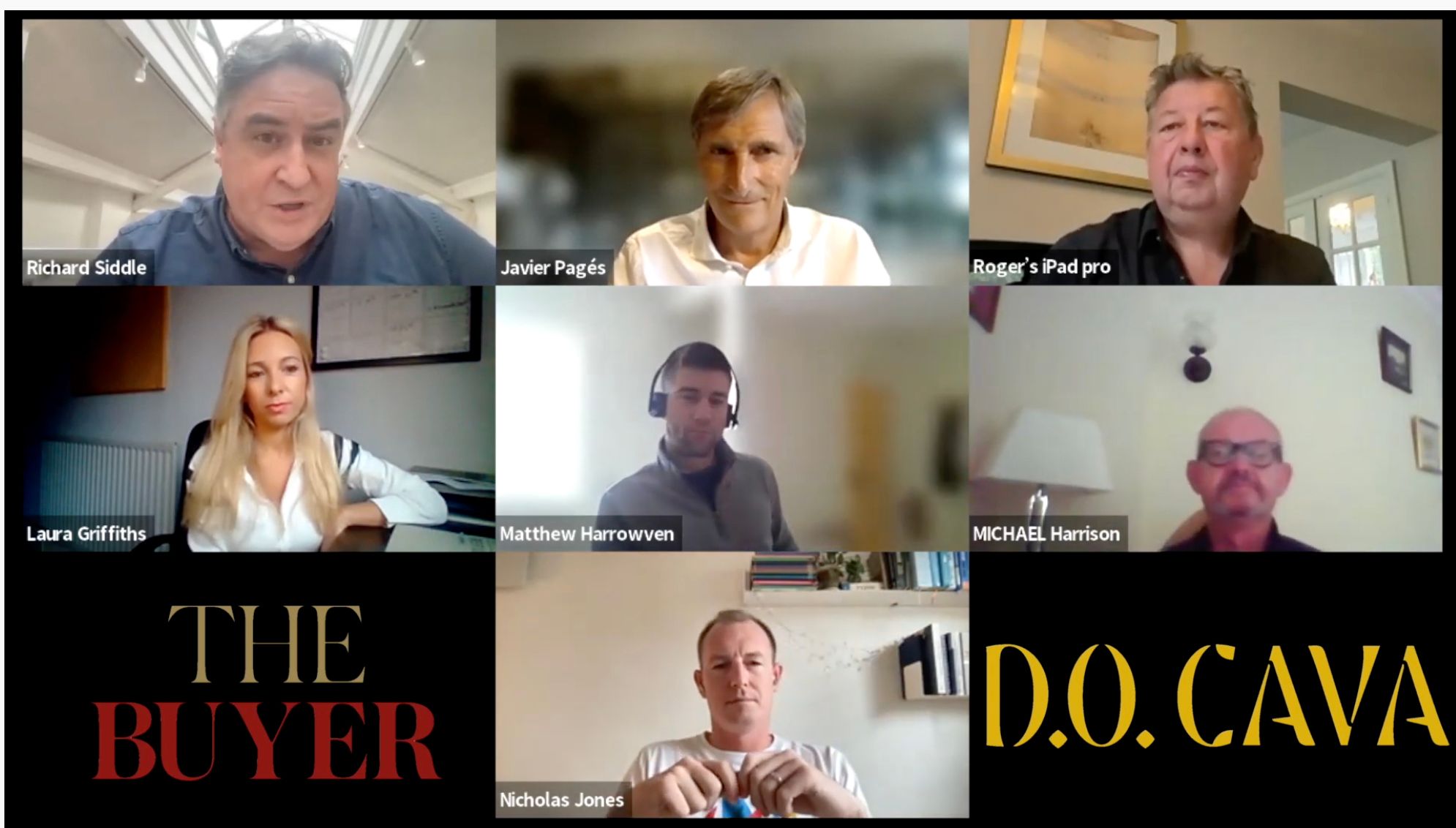Cava — the name conjures up images of celebration, of sunshine in a glass. But Cava, derived from the word cave, is so much more than just bubbles. We’ve long embraced the elegant French fizz, Champagne, strictly protected by its regional designation. But what happens when Spanish vintners began adopting the méthode champenoise, producing their own bottle-fermented wines?
Originally, Spanish winemakers referred to their sparkling wines as Champán, drawing direct comparisons to their French counterparts. However, in 1972, after French legal pressure, Spain was forced to abandon the term Champán, and Cava was born, taking its name from the caves or cellars in which the wines were aged. Yet, the heart of this narrative stretches beyond the wine itself; it speaks to place, regulation, and evolution.
It was in the 19th century, when Josep Raventós produced the first Cava, influenced by his studies in Champagne. And by 1872, Cava production was firmly established in Sant Sadurní d’Anoia— a hub that still beats at the heart of this Spanish sparkling wine's world. However, as I discovered during my recent trip to Penedès, what truly shapes the presence and future of Cava today are the comprehensive regulatory reforms that have recently been implemented.
The power of regulation
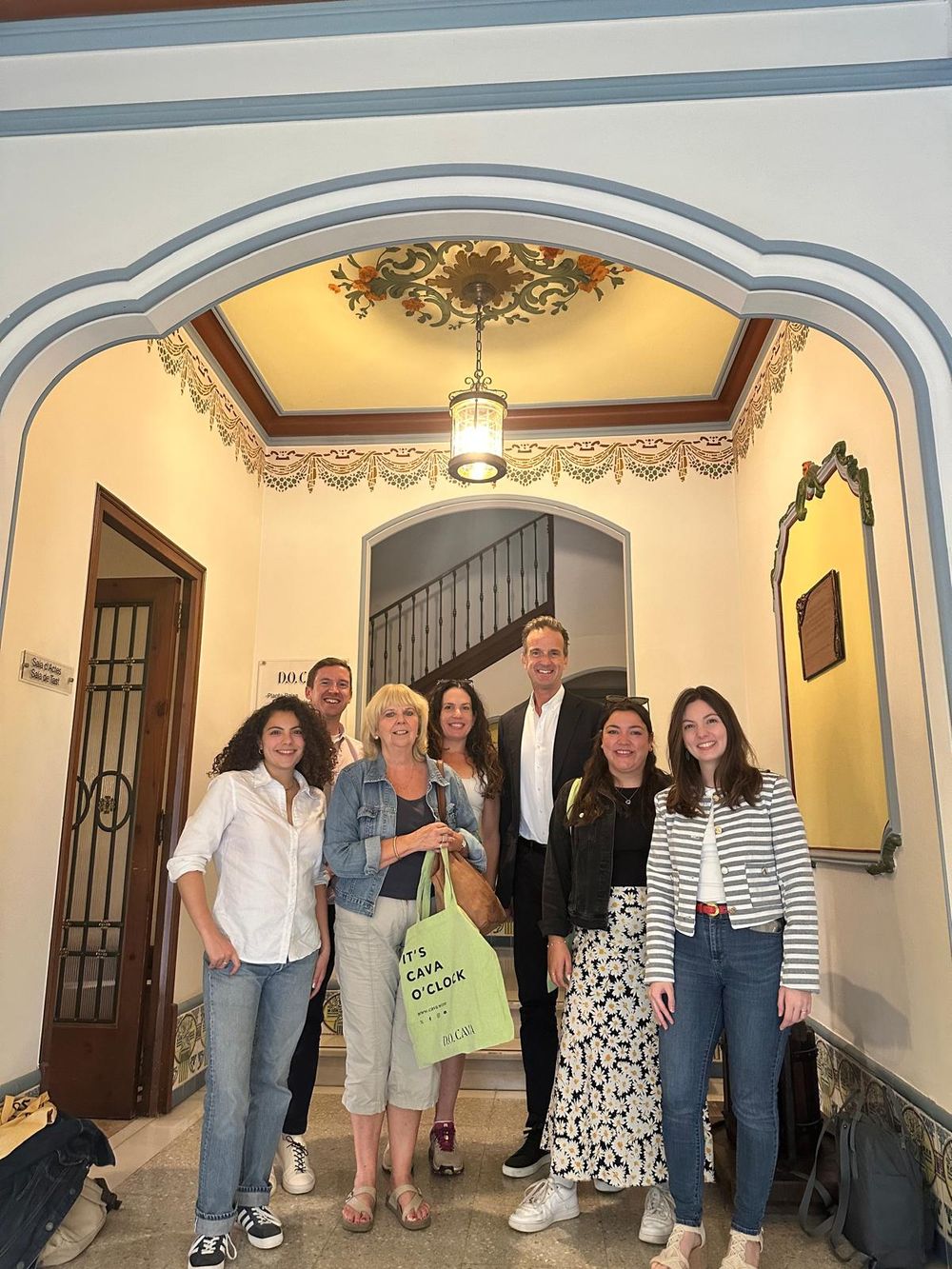
At D.O. Cava’s Consejo Regulador with David Forer MW
I recently found myself in the sun-soaked region of Penedès, a key zone for Cava production, fresh off a gruelling 30-mile ultra marathon. After all what’s better for recovery then vividly refreshing acidity, bubbles, lowish alcohol and a Mediterranean climate?
My visit brings a timely update in the region’s development too — as new regulations and classifications are being implemented in D.O. Cava, aiming to elevate the quality and specificity of this iconic wine. And yet, as I prepared for my trip, I realised that despite these shifts, the most up-to-date information about these regulations seemed elusive. This posed a broader question: How can we fully understand and appreciate Cava today? What does the future hold for this historic sparkling wine, and how can we ensure its essence is captured on a global scale?
Our first stop in understanding these developments came with a detailed presentation by Judith Manero from D.O. Cava’s Consejo Regulador, the regulatory body responsible for safeguarding the quality and identity of Cava. Judith’s presentation offered a deep dive into the recent legislative changes that aim to not only elevate the quality of Cava but also bring clarity to consumers.
The most significant shift? Zoning and segmentation. In 2020, D.O. Cava introduced a new legal framework that divides the region into four primary zones, with a further breakdown into subzones. This restructuring ensures that consumers can now pinpoint the exact geographical origin of their bottle, something that was previously a grey area.
These four zones are:
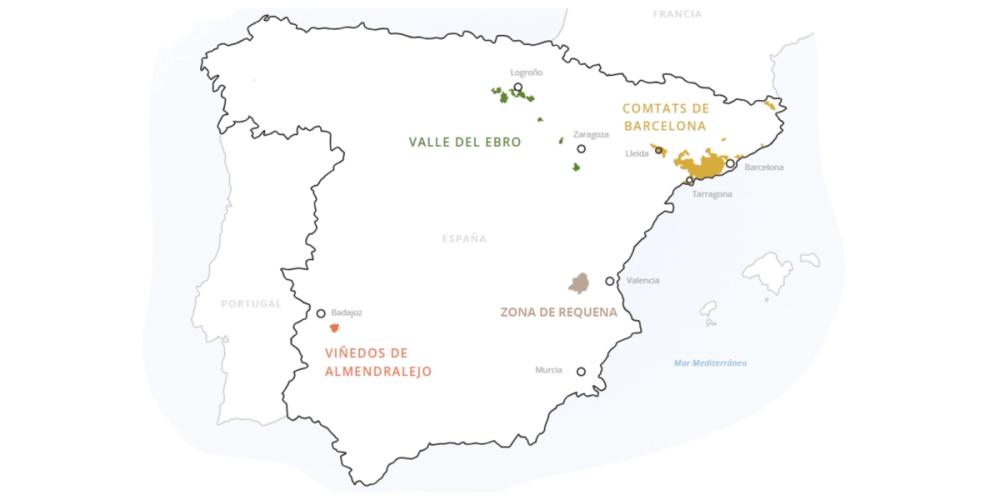
Comtats de Barcelona – The heart of Cava production, where 95% of all Cava originates. This zone alone is divided into five subzones, each contributing its own unique terroir and characteristics to the wine.
Valle del Ebro – Known for its continental climate, this area spans both the Rioja and Zaragoza regions.
Altos de Levante – A high-altitude region in Valencia, offering distinct flavors due to its dry climate and significant diurnal temperature variations.
Viñedos de Almendralejo – Located near the Portuguese border, this area is characterized by extreme seasonal temperatures, contributing to its unique growing conditions.
This zoning was first legally recognised in 2020, but it wasn’t until 2021 that the new names began appearing on labels, adding transparency to the Cava market. So now, when you see a bottle of Cava de Guarda Superior, you know exactly where it comes from and the quality behind it.
Segmentation: what it means for consumers
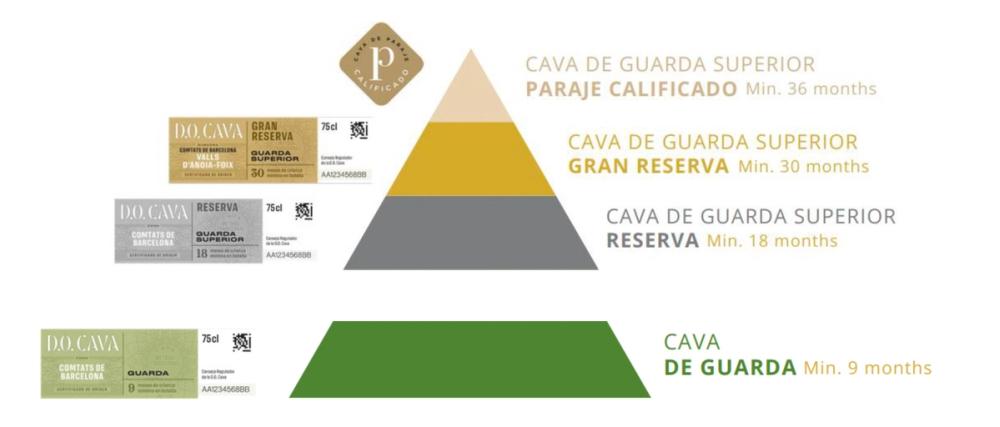
In addition to zoning, DO Cava has introduced a segmentation system, designed to clarify the ageing process and further emphasise quality differentiation. There are now three key categories of Cava:
Cava de Guarda – The entry-level category, requiring a minimum of nine months of ageing. This category focuses on younger Cavas with fresher profiles.
Cava de Guarda Superior – A higher-quality classification that is divided into three subcategories:
Reserva: Requires a minimum of 18 months of ageing.
Gran Reserva: Requires a minimum of 30 months of ageing.
Paraje Calificado: Requires a minimum of 36 months of ageing, with wines sourced from specific single vineyards.
Importantly, by 2025, Cava de Guarda Superior wines, including all three subcategories, must be 100% organic, underscoring DO Cava’s commitment to sustainability and premium production standards.
Paraje Calificado – This is the pinnacle of Cava production, where wines must come from a specific plot of land that demonstrates unique terroir characteristics. These wines undergo rigorous ageing requirements (at least 36 months) and strict production standards, making them akin to Champagne’s Grand Cru system.
These changes, as Judith explained, provide a clearer quality pyramid for consumers, moving away from the previous confusion. The concept of Guarda (meaning "to keep" in Spanish) highlights the importance of patience in Cava production. This is particularly vital for Brut Nature, which, as Judith emphasised, is the most popular style locally, with its dry, refreshing profile that requires no sugar dosage thanks to the balance already achieved during vinification.
Evolution and revolution: the Corpinnat effect
No discussion about Cava’s recent transformations would be complete without mentioning Corpinnat, a group of elite producers who left the Cava DO in 2019. Their departure shook the industry, drawing attention to concerns over the appellation's quality and geographical ambiguity. Corpinnat, which includes producers like Gramona, Recaredo, Llopart, Nadal, and Sabaté i Coca, set new benchmarks for Spanish sparkling wine, focusing on organic farming, long lees ageing, and a strong sense of place. Their exodus from the DO Cava was a wake-up call that arguably triggered the regulatory reforms we see today.
While Corpinnat may no longer operate under the Cava umbrella, their commitment to quality has indirectly influenced the DO Cava’s new directions, particularly in the creation of the Paraje Calificado classification, which demands similar rigor. Among the wineries producing Paraje Calificado Cavas are Juvé & Camps, Codorníu, and Torelló, each showcasing the distinct character of their respective single-vineyard plots.
Numbers game: Cava’s global impact
It’s clear that Cava isn’t just a niche product for the Spanish market. In fact, 68% of the 251 million bottles produced annually are destined for international markets, making Cava a key player on the global sparkling wine stage. The total production area spans 38,000 hectares, with over 6,000 operators involved, including 370 wineries registered under DO Cava.
The numbers also tell a story of growth. Recent reports show total sales reaching 251.8 million bottles, marking a peak in recent years. Germany, Belgium, the U.S., and the UK remain key markets, with consistent growth despite challenges such as fluctuating demand from third countries and stock balancing post-pandemic. For domestic sales, 30-32% of Cava’s production is consumed locally, demonstrating strong Spanish market support alongside global demand.
Questioning sustainability: the organic debate

Pere Ventura vineyards with Montserrat backdrop
One of the most talked-about aspects of Cava’s evolution is its growing commitment to sustainability, with the ambitious goal of making 100% of Cava de Guarda Superior organic by 2025. On the surface, this sounds like a commendable step, reflecting the industry’s desire to address environmental challenges and guaranteed quality at the same time. However, the question that arises is whether this shift towards organic production is as straightforward as it seems.
Many producers, from smaller operations like Vins el Cep to larger players such as Codorníu, have embraced organic practices either fully or partially, recognising the benefits to both the environment and wine quality. However, as some winemakers noted during my visit, the effort required to meet these organic standards can be considerable. Organic farming means more manual labour and, for many, a heavier reliance on the unpredictability of nature.
While these producers seem satisfied with the switch, the added cost and pressure of maintaining organic certification shouldn’t be ignored. This is particularly pertinent when considering the broader impacts of climate change, which has already begun to affect the region. The growing pressure on water resources, soil health, and rising temperatures will likely challenge the sustainability of even the most rigorous organic practices in the long term.
As noted in a recent article from DO Cava, climate change is already causing significant shifts in vineyard management, for example the occurrence of green mosquito pest and increased vine diseases threatening some organic vineyards. Coupled with stricter rules on yield limits, I question how sustainable (pan also intended) the transition to fully organic farming will be in the face of these challenges, especially with the added cost and time investment.
This doesn’t mean the industry is opposed to going organic — far from it. Producers recognise that organic certification is increasingly becoming the norm and see it as a necessary step for marketing and environmental stewardship. However, a deeper conversation around the long-term viability of organic practices, particularly in extreme conditions, is warranted. Sustainability is more than just a certification; it involves a holistic approach that considers environmental, economic, and social factors.
The cost of quality: labels and standards
During Judith’s presentation, we also discussed the cost and logistical process behind obtaining certification stamps for labels such as Cava de Guarda Superior or Paraje Calificado. Interestingly, producers don’t need to pay for the stamp upfront, but they do cover the cost of the Marchamo, a quality seal placed on each bottle. After the bottles are certified and their labels reviewed by the Consejo Regulador, producers are free to release their wines. This quality control process is exhaustive, with regulations designed to maintain Cava’s premium status.
Judith also touched on the generational divides within Cava’s winemaking families. In many cases, disagreements about regional authenticity and branding — as seen in the Corpinnat split — are driven by long-standing cultural and political factors. While the hope remains that Corpinnat may one day rejoin the DO, the current landscape is focused on ensuring that Cava maintains its integrity and remains competitive on the global stage.
Cava and Food with David Forer MW
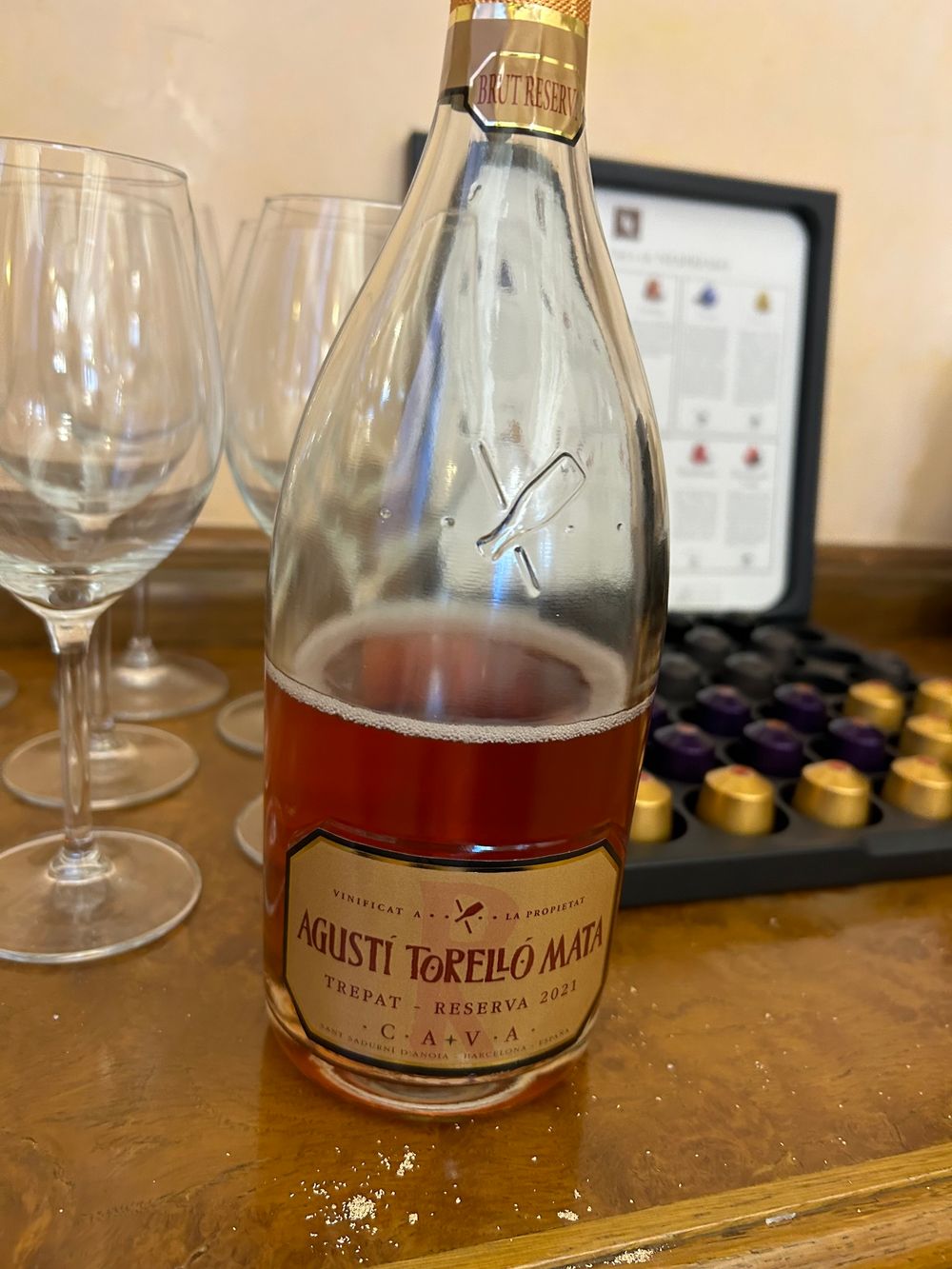
Following the presentation, David Forer MW Canadian born, a now living in Spain tending his own vineyard, hosted a food and Cava pairing lunch for us, offering a memorable exploration of how Cava complements a wide range of Mediterranean cuisines. We tasted through a diverse range of Cavas including Agustí Torelló Mata Rosat Trepat 2021. This Cava had a bright and lively expression of the unique Trepat grape, offering a refreshing edge with layers of complexity. The nose immediately presents a bouquet of herbaceous notes, with distinct hints of fennel and a touch of earthiness that set it apart from the typical rosé profile. On the palate, juicy strawberry mingles with the savoury undertones of herbs, creating a delicate yet engaging balance.
Light in body and elegant in structure, this rosé carries a delightful brightness, making it an ideal match for prosciutto. The wine’s acidity and its herbaceous complexity cut through the richness of the prosciutto, while the fruity notes enhance the saltiness, resulting in a harmonious pairing.
David highlighted the versatility of Cava, explaining:
“Cava is a unique sparkling wine in that it pairs with such a broad range of foods from around the world. Its bubbles, complexity, and acidity cleanse the palate, making it perfect for almost any occasion.”
All wines we tasted, with their precise acidity and elegant structure, showcased Cava’s ability to elevate simple and complex dishes alike.
A unified front for change
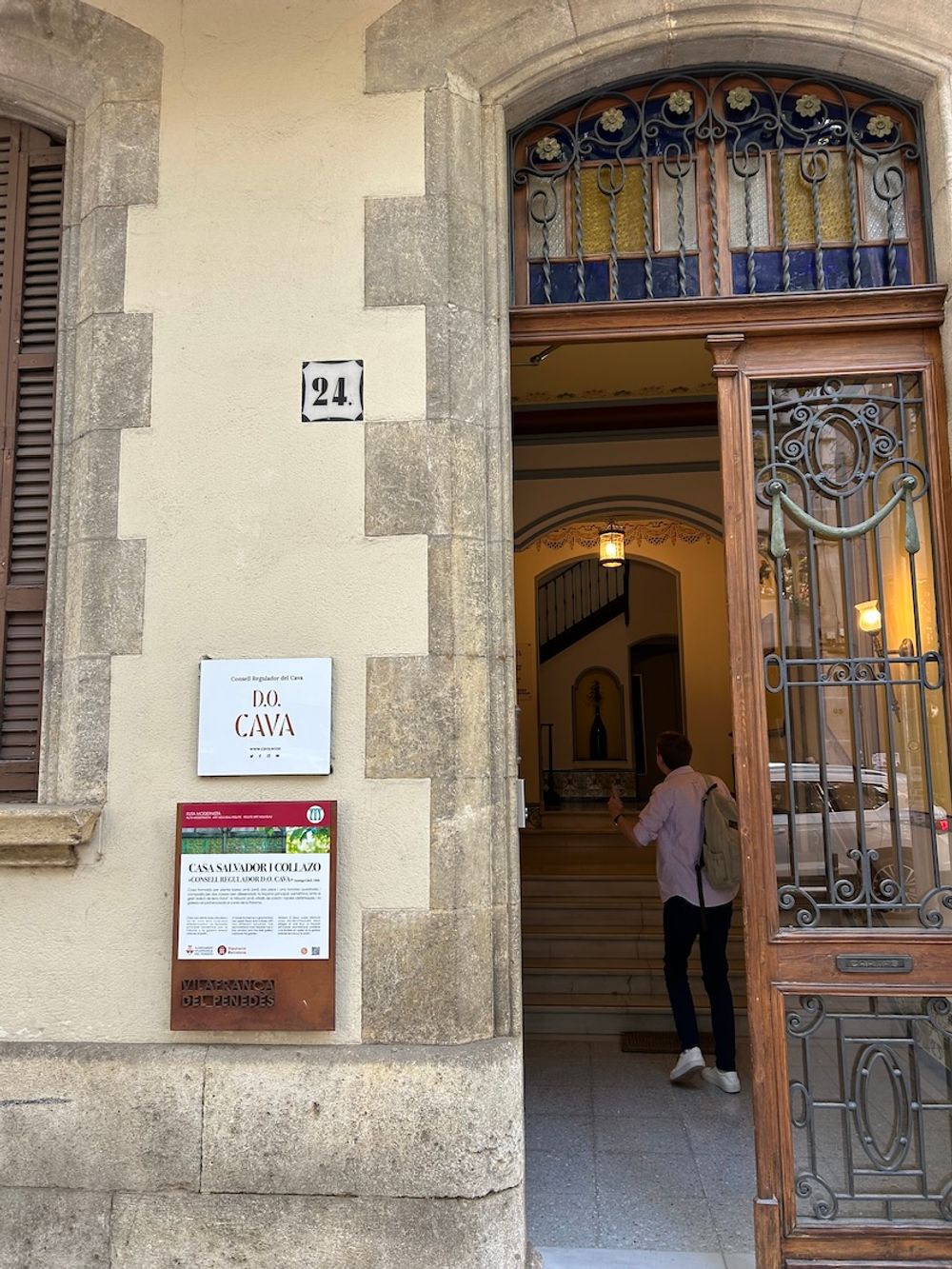
Producers across the region are stepping up, eager to implement the new legislation and embrace the future of Cava. During my visit, it became clear that collaboration among the producers is key to the success of these reforms. Whether through the adoption of the Guarda Superior categories or ensuring organic certification, Cava’s producers are working together to elevate the entire region.
The future of Cava looks promising, with a clear focus on premiumisation, quality control, and consumer education. The DO Cava seal is now a mark of transparency and excellence, ensuring that each bottle not only meets rigorous quality standards but also carries a story of place, tradition, and innovation.
With 38,000 hectares of vineyard and over 370 wineries producing Cava, this is no small operation. But by implementing these new regulations, the Consejo Regulador is ensuring that Cava can confidently stand alongside Champagne and Prosecco in terms of quality and recognition. And with 68% of Cava being exported to international markets, clarity will undoubtedly help Cava continue its upward trend in global wine markets.
For Cava, the introduction of zoning, segmentation, and sustainability measures isn’t just about protecting the brand — it’s about elevating it. These changes may take time to fully embed themselves in the consciousness of consumers (or the producers), but they mark an important milestone in Cava’s evolution.
The magic of Cava lies not just in its lees aged bubbles, but in the way it is constantly transforming, both in the bottle and in the minds of those who make and drink it. As these regulations take hold, one can only wonder — what heights will Cava reach next?

